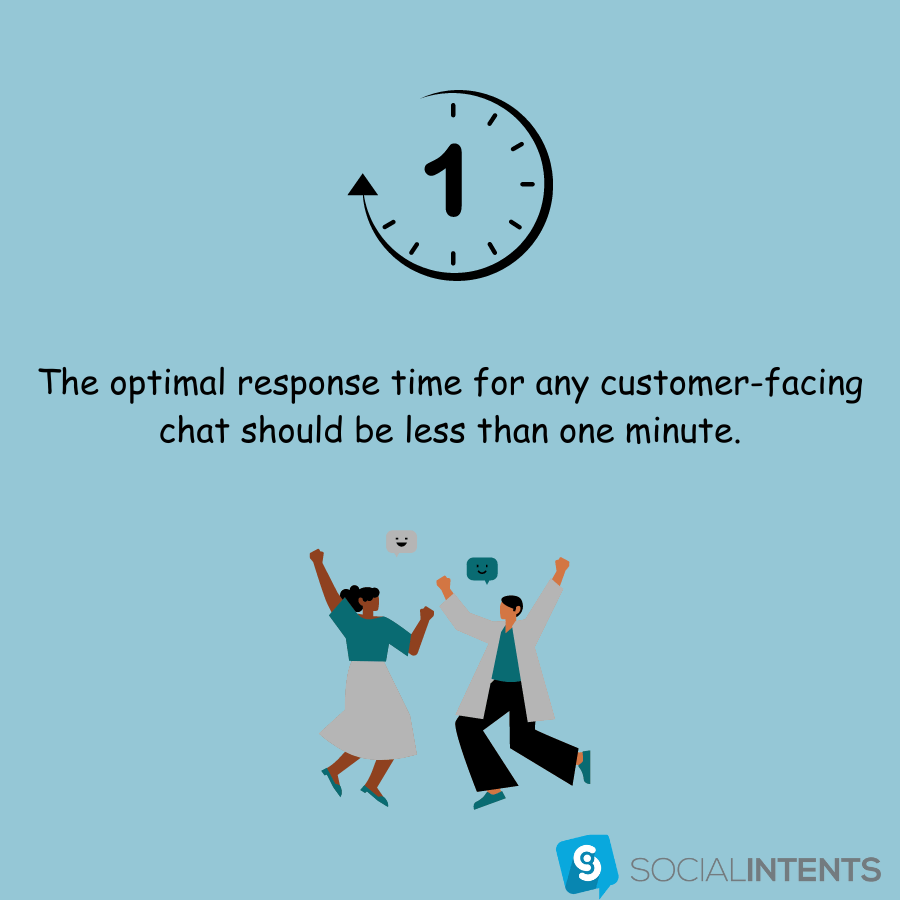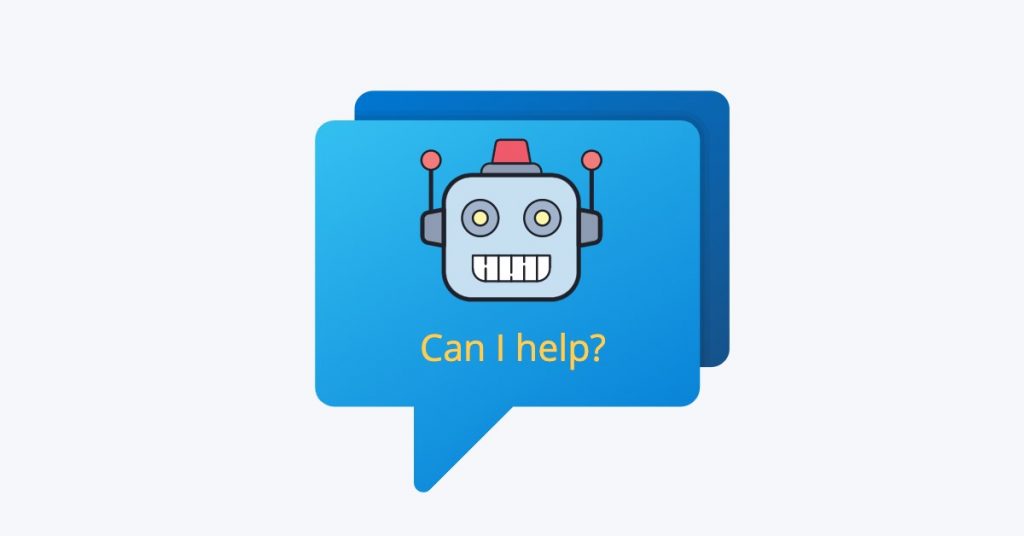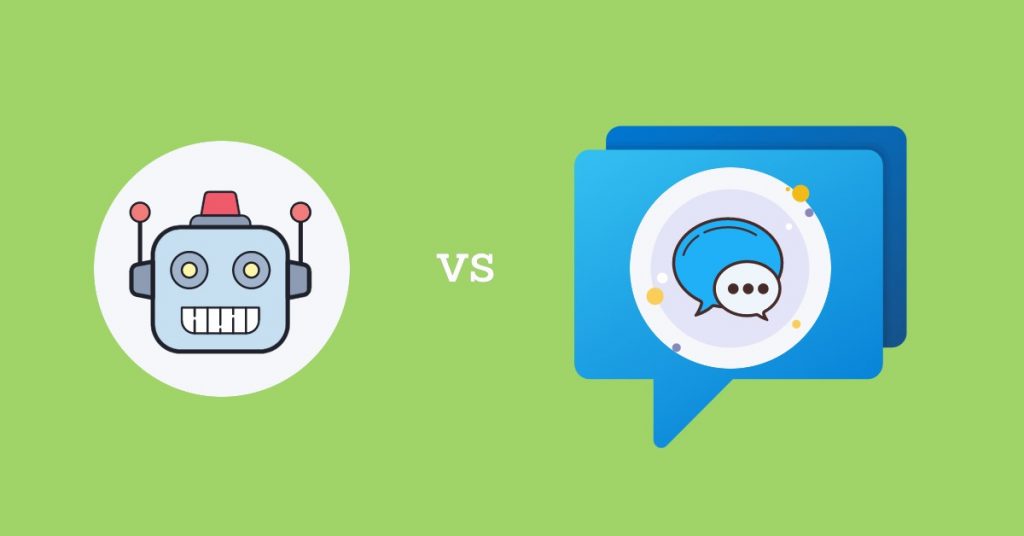The rise of chatbots as a customer service tool has transformed how companies interact with their customers.
But do chatbots actually improve customer experience?
Recent statistics show that the average satisfaction rate of bot-only chats is 87.58%. This is a good indication that chatbots can significantly enhance customer satisfaction.
From instant responses to personalized support, chatbots have quickly made the customer service experience more efficient, engaging, and even satisfying.
Keep reading to discover the benefits of integrating these virtual assistants into your customer service channels.
What Is a Chatbot?
A chatbot is a sophisticated computer program designed to engage with customers through voice or text communication.
As a virtual assistant, a chatbot is responsible for improving customer satisfaction.
Equipped with pre-written instructions for common queries, chatbots can offer a wide range of services and functionalities including appointment scheduling, lead generation, and even multilingual support.
AI-powered chatbots are built with complex Natural Language Processing (NLP) and Machine Learning (ML) algorithms. This allows them to continuously learn and become more effective over time by analyzing data from previous interactions.
What Are Customer Service Chatbots?
Customer service chatbots are specialized chatbots designed to deal with customer queries by simulating human conversation.
Their programming allows them to provide answers to common questions and assist with routine customer needs.
Chatbots for customer experience are commonly integrated into various communication channels such as company websites, SMS, and messaging platforms like Facebook Messenger, WhatsApp, and WeChat.
Their primary purpose is to improve customer satisfaction by delivering instant support, resolving issues quickly, and most importantly, freeing up human support teams to handle more complex customer requests.
Are Chatbots Replacing Human Agents?
The rise of chatbots has sparked discussions about their impact on human agents in various industries.
In 2023, 88% of consumers had at least one conversation with a chatbot. So, it is safe to assume that their popularity has been rapidly increasing.
Despite this, chatbots are not here to take over customer support. On the contrary, they are a fantastic addition to customer support teams, enhancing their capabilities and allowing both employees and customers to benefit from this technological shift.
Chatbots help customer service agents by:
- Handling repetitive tasks: By automating responses to frequently asked questions and providing instant support, chatbots free up human agents to focus on more complex, high-value tasks.
- Managing high volumes of inquiries: During peak times or unexpected surges in customer messages, chatbots can take over without compromising quality or overwhelming the customer service teams.
- Gathering customer data: Chatbots can provide customer support teams with context around a query by handling initial interactions, and then escalating them to human agents.
How Can Chatbots Improve Customer Experience?
Customer service chatbots provide businesses with a significant competitive advantage by enhancing customer service efficiency and satisfaction.
Here’s how:
Instant responses
The ideal response time on any customer-facing chat needs to be under a minute.

The biggest reason more customers are opting for chatbots is their quick answers to queries.
During peak hours, customer service agents can’t handle multiple requests at once. This usually leads to frustrating wait times and dissatisfied customers.
Quick response times are critical for customer engagement.
Chatbots can handle multiple inquiries simultaneously, providing instant answers and ensuring customers experience zero wait time.
The result? Businesses can handle a higher volume of inquiries without sacrificing quality or speed.
This efficiency not only improves the customer experience but also contributes to the overall productivity and effectiveness of the customer service team.
Multilingual Support
More than 58% of small businesses have international customers.
So, chances are that your chat support teams are speaking to consumers in different countries and languages.
With chatbots, you can provide multi-lingual chat support as they can translate foreign languages in real-time. You no longer need to drop queries because of language gaps.
With advanced Natural Language Processing (NLP), AI-powered chatbots are capable of processing multiple languages, allowing them to communicate effectively with a diverse customer base.
This feature enables you to offer self-service support in various languages without the need for specialized bilingual agents.
As a result, customers can interact with businesses in their preferred language, enhancing the accuracy of communication and making your services more inclusive.
Increased productivity
Chatbots can boost your customer support team’s productivity by automating routine and repetitive tasks.
By handling basic inquiries, providing information, and processing simple transactions, chatbots allow human agents to concentrate on more complex issues that require empathy and human interaction.
This efficient division of labor not only reduces response times but also improves the overall quality of customer support.
BONUS: Chatbots can gather essential information during initial interactions, preparing your live chat team for more effective problem-solving when the issue is escalated.
High scalability
Even the best query filtration methods – pre-chat survey, segmentation, and routing – can make scaling up difficult and costly with human agents.
Unlike customer support teams, chatbots can manage an unlimited number of customer interactions simultaneously without the need for additional resources.
This scalability ensures that businesses can handle surges in customer queries during peak times without compromising service quality or incurring extra labor costs.
Lower operational costs
Without the need for extensive human staffing, the efficiency of chatbots lowers operational costs.
You can reinvest the cost savings from reduced staffing into other areas of customer service, further improving the overall customer experience.
With Social Intents, you can integrate a chatbot into your website for just $39/month. This way you can provide a seamless customer experience without worrying about the extra costs.
Efficient feedback mechanism
Consumer reviews play a crucial role in business today.
Reports indicate that 92.4% of customers are more likely to purchase a product or service if they have read trusted reviews about it.
However, getting customers to leave reviews on their own can be challenging.
With 71% of customers willing to leave a review IF ASKED, chatbots can efficiently prompt customers for feedback immediately after a purchase.
They can collect feedback in various formats:
- Clickable buttons for star ratings
- Clickable buttons with pre-written responses for faster feedback
- A free-flow text box for detailed feedback
- Incentives like discounts, vouchers, etc.
You can even connect your chatbot to email and let it send feedback requests to customers at their convenience, which might be more appealing to some than providing instant feedback.
24/7 availability
Consistent availability is crucial for customer relationship management.
However, hiring live agents to work around the clock can be both expensive and unrealistic.
Research indicates that 8 to 9 pm on Mondays and Thursdays are consistently the most popular times for online shopping. Yet, this falls outside of standard business hours.
Plus, if you run an online business it’s crucial to consider time differences, especially if you have an international customer base.
Chatbots rank #1 in supporting your consumers round the clock.
Integrating them means that you can be present for your customers 24/7 without costing you a fortune.
Omnichannel solution
Through their omnichannel capabilities, chatbots allow businesses to meet consumers wherever they are in their customer journey. This includes whatever medium they choose.
By integrating chatbots across multiple platforms such as websites, messaging apps, email, and social media, businesses can provide continuous support.
A report found that 95% of customers use multiple channels in a single customer service interaction, so having the option to switch between channels without losing the context of their previous interactions is a great way to leave a positive impression.
Instant access to knowledge bases
Customers wouldn’t feel the need to get in touch with customer support if they could resolve their problems on their own.
A report from Microsoft found that 86% of customers expect a self-service option.
Self-service is particularly beneficial for:
- Quickly answering simple questions
- Avoiding long waiting times to speak with a customer support representative
- Obtaining urgently needed help outside of office hours
In such cases, chatbots are invaluable tools for meeting customers’ needs.
By leveraging AI chatbots or even simpler chatbots, you can efficiently direct customers to your knowledge bases, including articles, FAQs, use cases, videos, links, and other resources.
Transform visitors into leads
We’ve all experienced a chatbot proactively greeting us when we land on a website.

This isn’t just a friendly gesture.
Proactive chat can effectively convert visitors into qualified leads by offering support before they even ask for it.
This approach is especially beneficial for businesses like SaaS, where visitors often require extensive onboarding and potential users may feel hesitant to ask questions.
With proactive chat, you can design logical chatbot conversation flows to enhance customer experience at every stage of their journey.
By incorporating features like clickable answer buttons in the chat window, you streamline the interaction, providing a quick and user-friendly chat experience.
This not only helps in addressing visitor queries promptly but also improves overall customer satisfaction and engagement.
Personalized product recommendations
Customer service chatbots can make personalized recommendations to shoppers based on customer data such as browsing history and past purchases, or by asking them a few questions.
This allows them to suggest relevant items or services, making the shopping experience more tailored.
For example, if a customer frequently buys skincare products, the chatbot might recommend complementary items like moisturizers or serums.
Here’s an example of a bot making a wine recommendation:

Boost social media sales
Over 5.07 billion people around the world now use social media and undoubtedly, many of these users are your customers.
Ignoring social media is no longer an option if you care about engaging with your audience effectively.
Social sales generate more than 50% of revenue across 14 major industries, including healthcare and logistics.
Adding chatbots to your social media pages can be a game-changer for both your sales and customer experience strategies.
Chatbots can handle a wide range of customer interactions directly on your social media platforms, allowing customers to resolve their queries without needing to navigate away from their preferred channels.
Whether it’s answering product questions, guiding users through the purchasing process, or providing post-purchase support, chatbots ensure a seamless and efficient customer journey.
Here is how Facebook Messenger is already using chatbots for businesses:

Reduce shopping cart abandonment
Customers often navigate through the entire sales funnel only to abandon their purchases at the final step. This can happen for various reasons, such as:
- Unexpected extra costs
- Slow delivery times
- Complicated checkout processes
- Security concerns
Organizations continually seek new strategies to reduce shopping cart abandonment, as converting a customer who has shown intent to purchase is easier than acquiring new leads.
One effective tool for addressing this challenge is the use of chatbots.
Chatbots can reduce shopping cart abandonment by:
- Answering customer questions: Chatbots provide instant responses to any queries customers might have.
- Offering discounts: They can offer personalized discounts or promotional codes in real-time, incentivizing customers to complete their purchases.
- Assisting hesitant visitors proactively: Chatbots can engage with visitors who seem hesitant, guiding them through the checkout process and providing reassurance about delivery times, return policies, or any other potential issues.

Personalization
Chatbots powered by artificial intelligence are becoming increasingly adaptable to human conversation.
Customers expect personalized engagement.
Chatbots make this level of personalization possible through continuous learning and feedback loops. Over time, AI chatbots can:
- Predict consumer personality: Utilizing Machine Learning (ML), chatbots can analyze customer behavior and preferences to predict personality traits, enabling more tailored interactions.
- Understand language nuances: Beyond just processing natural language, chatbots can comprehend regional dialects and even typos. For instance, Latin American customers can use Spanish idioms, and the chatbot will understand and respond appropriately.
- Incorporate rich media: Chatbots can enhance conversations with emojis, GIFs, and images, adding a personal and engaging touch that surprises and delights customers.
- Contextualize conversations: They can also use contextual information, such as holidays or significant events, to make interactions more relevant and timely.
By implementing these strategies, chatbots help businesses create a more personalized and engaging customer experience.
Elevating Customer Experience With Chatbots
Chatbots improve customer experience by providing immediate responses, handling routine inquiries, and offering personalized product and service recommendations.
Their ability to interact across multiple channels also ensures customers receive consistent support, regardless of where or when they need it.
And these are their abilities now.
As chatbots continue to evolve, their role in customer service will become even more critical.
Effectively utilizing them will make your business better positioned to meet the growing expectations of their customers, leading to higher satisfaction, and ultimately, greater success.
With Social Intents, you can quickly integrate advanced AI chatbots into your website and experience the benefits of quick responses and proactive support on your customer experience.
Get started with our 14-day trial now.


